
The Martin Luther King Jr. National Historical Park covers about 35 acres (0.14 km2) and includes several sites in Atlanta, Georgia related to the life and work of civil rights leader Martin Luther King Jr. Within the park is his boyhood home, and Ebenezer Baptist Church — the church where King was baptized and both he and his father, Martin Luther King Sr., were pastors — as well as, the grave site of King, Jr., and his wife, civil rights activist Coretta Scott King.

The 16th Street Baptist Church is a Baptist church in Birmingham, Alabama, United States. In 1963, the church was bombed by Ku Klux Klan members. The bombing killed four young girls in the midst of the Civil Rights Movement. The church is still in operation and is a central landmark in the Birmingham Civil Rights District. It was designated as a National Historic Landmark in 2006. Since 2008, it has also been on the UNESCO list of tentative World Heritage Sites.

The Birmingham Civil Rights District is an area of downtown Birmingham, Alabama where several significant events in the Civil Rights Movement of the 1950s and 1960s took place. The district was designated by the City of Birmingham in 1992 and covers a six-block area.
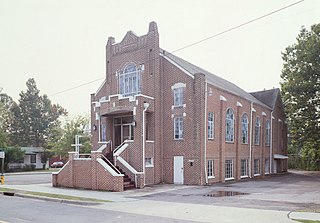
Bethel Baptist Church is a Baptist church in the Collegeville neighborhood of Birmingham, Alabama. The church served as headquarters from 1956 to 1961 for the Alabama Christian Movement for Human Rights (ACMHR), which was led by Fred Shuttlesworth and active in the Birmingham during the Civil Rights Movement. The ACMHR focused on legal and nonviolent direct action against segregated accommodations, transportation, schools and employment discrimination. It played a crucial role in the 1961 Freedom Rides that resulted in federal enforcement of U.S. Supreme Court and Interstate Commerce Commission rulings to desegregate public transportation.
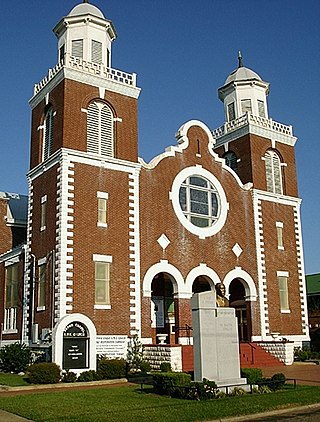
Brown Chapel A.M.E. Church is a church at 410 Martin Luther King Jr. Boulevard in Selma, Alabama, United States. This church was a starting point for the Selma to Montgomery marches in 1965 and, as the meeting place and offices of the Southern Christian Leadership Conference (SCLC) during the Selma Movement, played a major role in the events that led to the adoption of the Voting Rights Act of 1965. The nation's reaction to Selma's "Bloody Sunday" march is widely credited with making the passage of the Voting Rights Act politically viable in the United States Congress.

The St. Paul A.M.E. Church is a historic American Gothic Revival style African Methodist Episcopal Church located in Raleigh, North Carolina. A red brick and frame structure built in 1884 by black masons, St. Paul's was the first independent congregation of African Americans in Raleigh and is the oldest African-American church in Wake County, North Carolina. Before the end of the Civil War, the future founders of St. Paul's had been slave members of the Edenton Street United Methodist Church. The members of the church began calling their congregation "St. Paul's" in 1848. The church was listed on the National Register of Historic Places in November 1987 and is also a Raleigh Historic Landmark.

Sardis Baptist Church in Birmingham, Alabama, also known as Old Sardis Baptist Church was built around 1910. The church as the location where the Alabama Christian Movement for Human Rights was created at a mass meeting of over 1,000 people on June 5, 1956. Its pastor, the Reverend Robert L. Alford, was one of the founders of the organization. The church building was listed on the National Register of Historic Places in 2005.
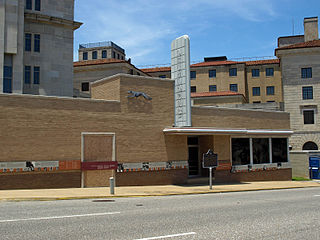
The Freedom Rides Museum is located at 210 South Court Street in Montgomery, Alabama, in the building which was until 1995 the Montgomery Greyhound Bus Station. It was the site of a violent attack on participants in the 1961 Freedom Ride during the Civil Rights Movement. The May 1961 assaults, carried out by a mob of white protesters who confronted the civil rights activists, "shocked the nation and led the Kennedy Administration to side with civil rights protesters for the first time."

The Bethel A.M.E. Church, known in its early years as Indianapolis Station or the Vermont Street Church, is a historic African Methodist Episcopal Church in Indianapolis, Indiana. Organized in 1836, it is the city's oldest African-American congregation. The three-story church on West Vermont Street dates to 1869 and was added to the National Register in 1991. The surrounding neighborhood, once the heart of downtown Indianapolis's African American community, significantly changed with post-World War II urban development that included new hotels, apartments, office space, museums, and the Indiana University–Purdue University at Indianapolis campus. In 2016 the congregation sold their deteriorating church, which will be used in a future commercial development. The congregation built a new worship center at 6417 Zionsville Road in Pike Township, Marion County, Indiana.
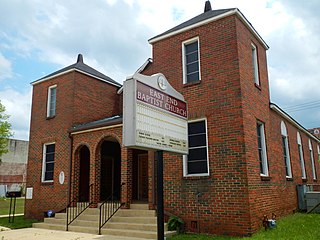
East End Baptist Church is a historic Baptist church building at 2609 Sixth Avenue South in Birmingham, Alabama. It was built in 1947 in a style that can be described as Romanesque Revival, but has been well described by Jay Price as mid-century traditional. It added to the National Register of Historic Places in 2005. During the Civil Rights Movement it was led by the Reverend Calvin W. Woods.

First Baptist Church, Kingston is a historic church at 4600 Ninth Avenue North in Birmingham, Alabama. It was built in 1961 and added to the National Register of Historic Places in 2005. The congregation was organized in 1930, it was led by George W. Dickerson from 1941 to 1972, it played a leading role in the Civil Rights Movement and served as a site for mass meetings held by the Alabama Christian Movement for Human Rights. The church is now surrounded by a public housing project erected in the late 1950s.

First Ebenezer Baptist Church is a historic Baptist church at 420 Graymont Avenue North in Smithfield in Birmingham, Alabama. It was built in 1963 and the congregation was active in the 1960s Civil Rights Movement. The church was added to the National Register of Historic Places in 2005. This church serves Jefferson County.
Mount Ararat Baptist Church is a historic church at 1920 Slayden Avenue, Ensley in Birmingham, Alabama. It is located in the Ensley suburb, west of downtown Birmingham, and overlooks Highway 239. It was originally built in 1929 but was modified in 1950 to add a red brick veneer.
The Peace Baptist Church is a church at 302 Sixth Street North in Birmingham, Alabama. Its historic building was added to the National Register of Historic Places in 2005. It was deemed significant for its association in 1963 with the Birmingham civil rights movement. The historic building, which had become a fellowship hall for a new church building built in 1970, has since been demolished.

St. Luke AME Zion Church is a historic African Methodist Episcopal Zion (AMEZ) church at 3937 12th Ave. North in Birmingham, Alabama. It was significant in the civil rights movement. It was added to the National Register of Historic Places in 2005.
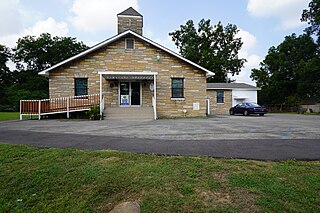
Shady Grove Baptist Church is a historic church at 3444 31st Way North, Collegeville in Birmingham, Alabama. The building is of concrete construction that was built in 1942 under the direct of its pastor, the Rev. Lewis J. Rogers. The exterior was faced with Permastone in the early 1960s. It is significant for its congregation's participation in the Alabama Christian Movement for Human Rights rallies for Civil rights in the 1950s and the 1960s under Rogers' direction. The building was added to the National Register of Historic Places in 2005.

West End Hills Missionary Baptist Church is a historic church at 1680 19th Place SW in Birmingham, Alabama. It was built between 1959 and 1965 when the main sanctuary was dedicated. The church is significant for its congregation's participation in the Alabama Christian Movement for Human Rights rallies for Civil rights in the 1950s and the 1960s under the direction of its pastor, the Rev. Coleman M. Smith. It was added to the National Register of Historic Places in 2005.

Canaan Baptist Church is a Baptist church located in Bessemer, Alabama. It is affiliated with the National Baptist Convention, USA. Built in 1961, it had a congregation active in the Civil Rights Movement of the 20th century and was added to the National Register of Historic Places in 2005.
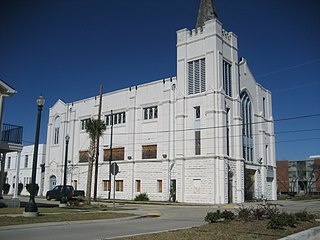
The Union Bethel A.M.E. Church in New Orleans, Louisiana, at 2321 Thalia St. at the corner of Liberty St., is a historic African Methodist Episcopal church.






















